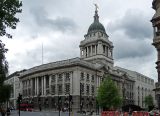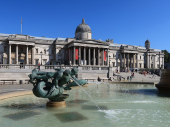
If you've ever traveled along the M6 motorway, you've likely encountered a peculiar sight: the towering structure known as the Pennine Tower. Erected in 1965 as part of the Forton motorway
services, this futuristic edifice looms 90 feet above the Lancaster-Preston route, boasting a hexagonal design that commands attention.
Originally envisioned as a high-end dining establishment offering gourmet fare such as lobster and steak, the 150-seat Pennine Tower was a pioneering addition to motorway infrastructure, boasting unparalleled views of Morecambe Bay from its observation platform. At the time of its inauguration, it held the distinction of being the highest motorway restaurant in existence.
Constructed at a cost of £885,000—equivalent to approximately £14.2 million in today's currency—the Pennine Tower embodied the spirit of progress and modernity that characterized the burgeoning motorway networks across the UK. Alongside its striking architecture, Forton services also featured amenities like an enclosed bridge for convenient access across both carriageways, self-service cafeterias, and facilities catering to truck drivers.
Nostalgic recollections from former staff offer glimpses into the tower's heyday, with memories of bustling tea and coffee services and chic waitressing uniforms evoking a bygone era. However, despite lofty aspirations, the restaurant's culinary offerings failed to impress, drawing scathing criticism from renowned food critic Egon Ronay in 1978.
Subsequent years saw the demise of the restaurant, repurposed first as a trucker's lounge before ultimately shuttering its doors in 1989. Ownership changes ensued, with the services passing from Top Rank to Pavilion, then to Granada, and currently under the stewardship of Moto. While Forton services continue to serve motorists, the Pennine Tower itself languishes in disuse, inaccessible to the public.
Designated as a Grade II listed structure in 2012, the Pennine Tower stands as a testament to a distinctive architectural era, embodying the democratization of motorway aesthetics and serving as a beacon for passing travelers. However, despite its historical significance, the tower remains a relic of the past, its interior now a shadow of its former glory, adorned with dated furnishings and worn-out carpeting.
Yet, despite its abandonment, the Pennine Tower elicits a sense of nostalgia and fascination, its otherworldly silhouette still capturing the imagination of those who traverse the M6 motorway. As a symbol of bygone aspirations and modernist design, it serves as a reminder of an era defined by bold visions and ambitious infrastructure projects. Photo by PAUL FARMER, Wikimedia commons.



































